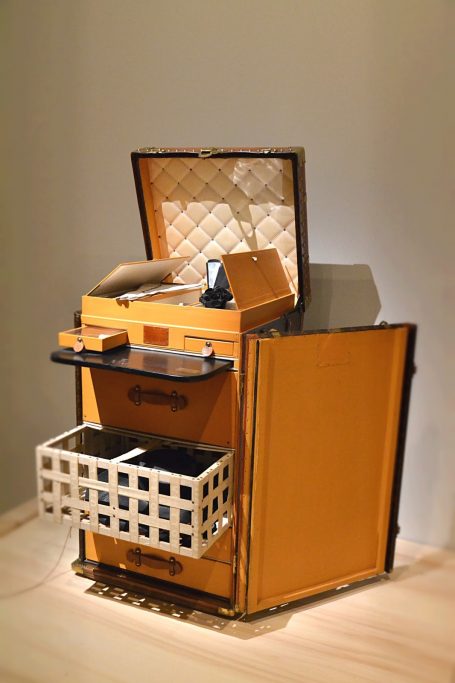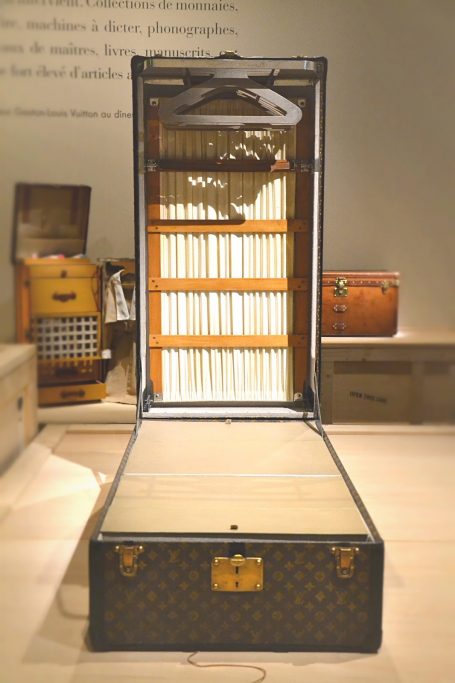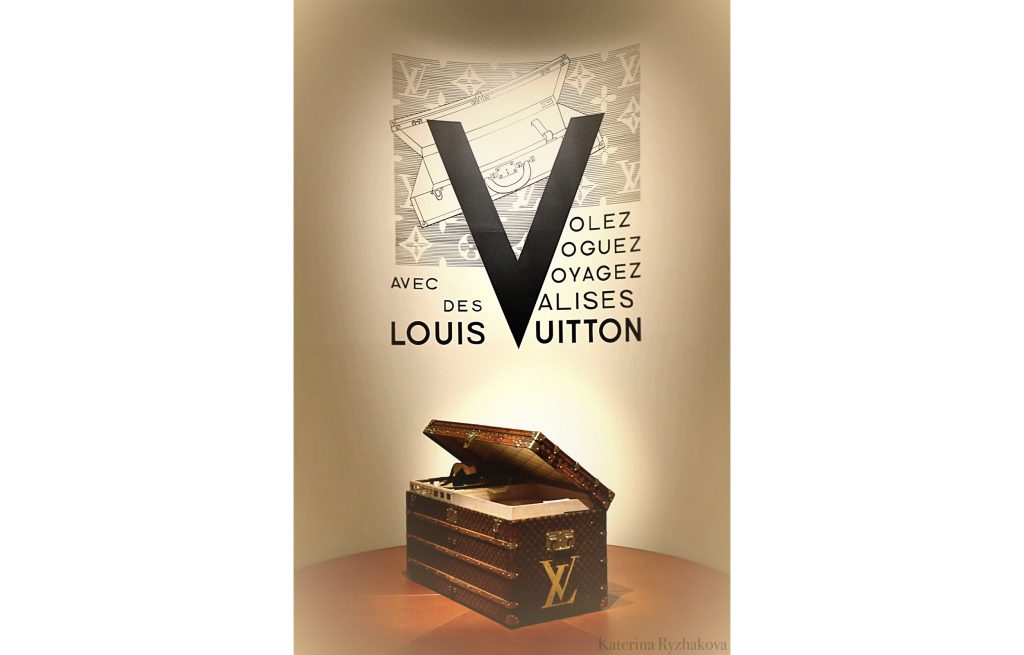
Since December 4th and until February 21st, Louis Vuitton offers Parisians and visitors alike the opportunity to discover a sophisticated exhibition full of delicacy, which is taking place at the Grand Palais.
It is a major retrospective about the history of Louis Vuitton through the 19th and the 20th centuries. According to Olivier Saillard, the curator of the exhibition, « the selection of historical pieces meet those from more recent times in a conversation and we wanted the more contemporary creations to take their force from the aristocratic history. /…/ There are several unexpected pieces some of which are very charming. For exemple, I have a particular favorite which is the small trunk given to clients called the trunk of flowers. Louis Vuitton placed a bouquet of flowers inside. I find this exquisite. »
So, let’s briefly look at some items. The picture of young Louis Vuitton is one of superb works of the Chinese painter Yan Pei-Ming.

In 1906, a reference catalogue precisely inventories items and luggage from Louis Vuitton. The trunk that would make the House a success was already there.

Since its foundation, the House of Louis Vuitton has stood out among its contemporaries with a series of inventions and innovations that today make up a lexicon of timeless patterns and designs : the Damier canvas, the iconic Monogram canvas, the « LV » initials… After developing and perfecting the flat trunk, the House continued to enrich its vocabulary of volumes, designs, and other signatures.
Between 1924 and 1931 André Citroën organized the Croisière Noire and the Croisière Jaune. The House of Louis Vuitton accompanied both expeditions at the request of Mr. Citroën.
In the early twentieth century, the invention of the Steamer Bag by Louis Vuitton revolutionized the industry of hand luggage. In its modern size, lightness, and convenience it was a precursor to the modern gym bag. The Steamer Bag was associated with the sea tavel craze.
Tied to the top of the back of curve-hugging cars, car trunks carried wardrobes and transformative hats.

In the early twentieth century, Louis Vuitton closely followed innovators who from the airship to the airplane, pioneered new ways.
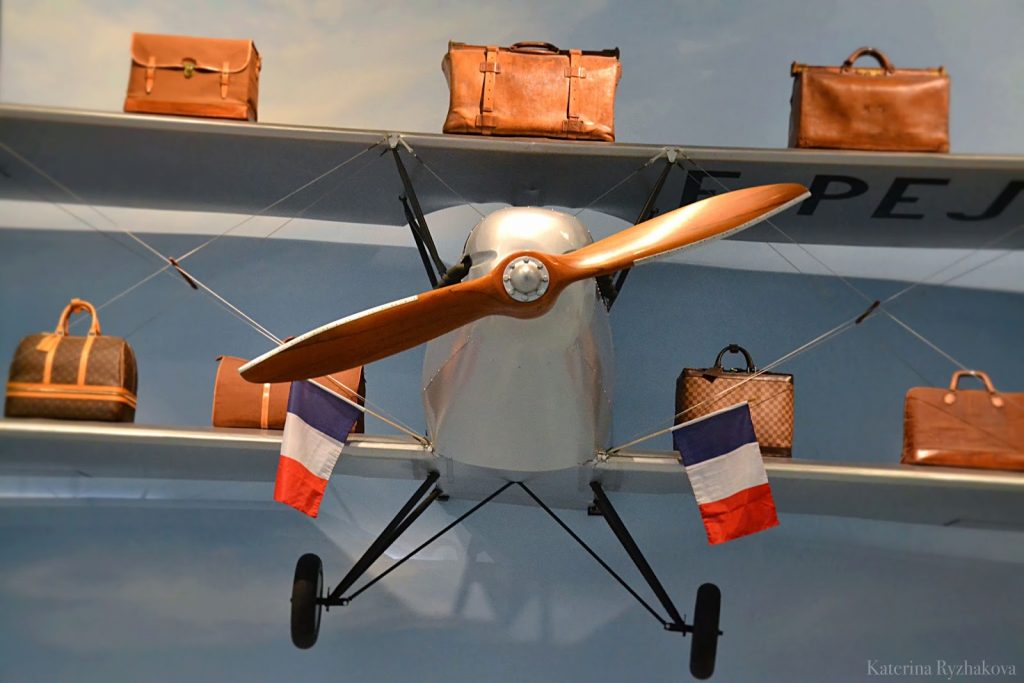
Secretary trunks, library trunks, writing desks, mobile offices : the House of Louis Vuitton accompanied those for whom writing was a necessity and a pleasure before any means of modern telecommunication existed, whether notable writers or anonymous amateurs.
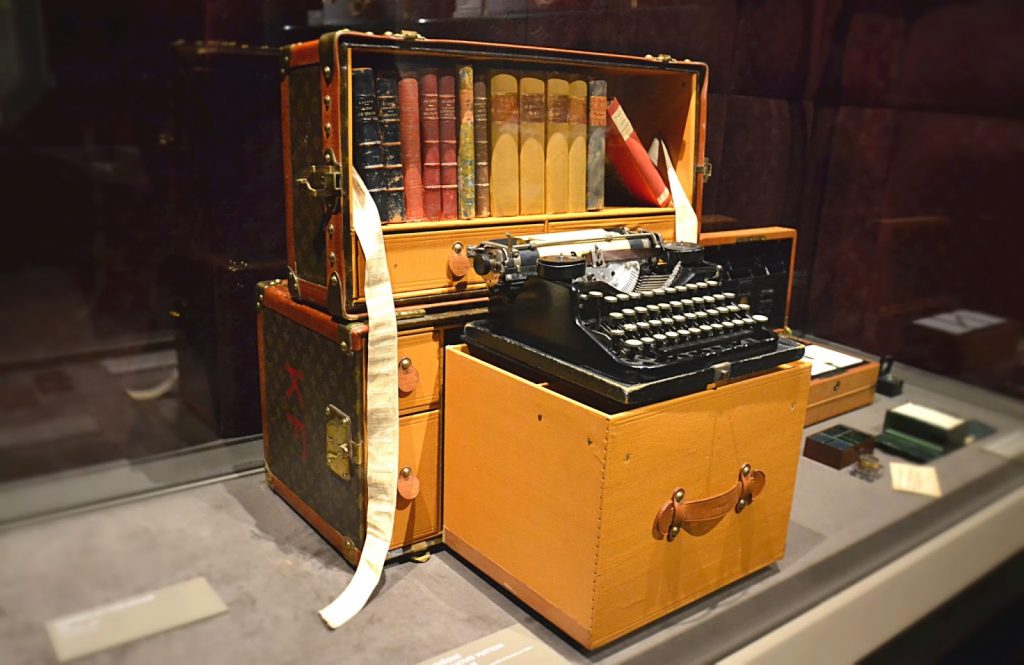
Lucien and Sacha Guitry were loyal customers, as evidenced by the many foot trunks and wardrobe trunks bearing their initials.
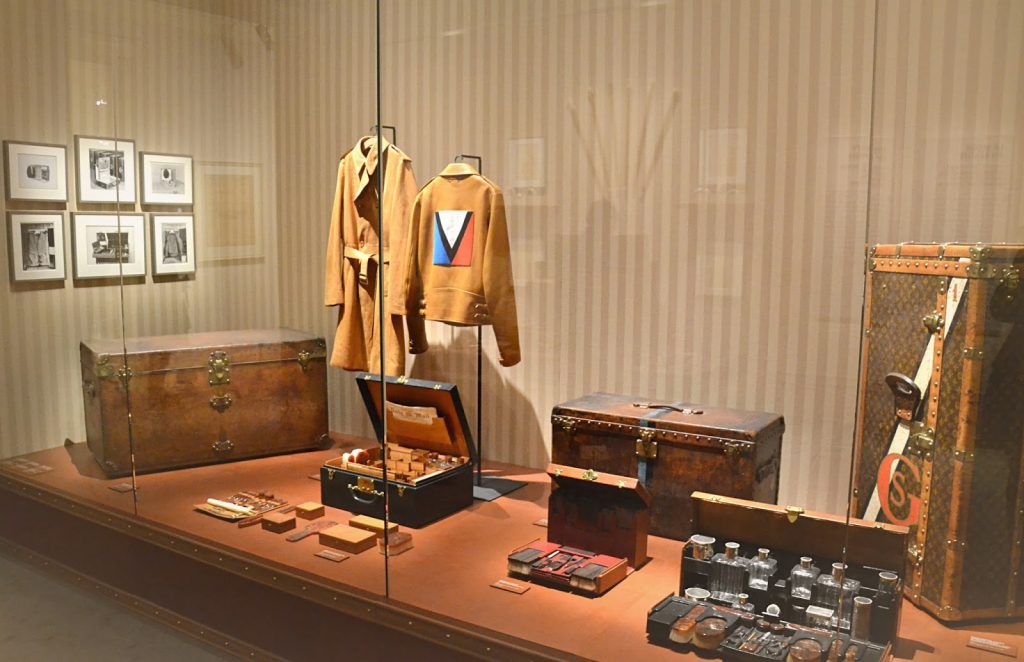
In 1997 ready-to-wear officially became part of Louis Vuitton collections and Marc Jacobs was named artistic director. For almost sixteen years his collections gave new interpretations to icons of the house, collaborating with artists Stephen Sprouse, Takashi Murakami and Richard Prince. Nicolas Ghesquière was appointed Artistic Director of Women’s collections in 2014.
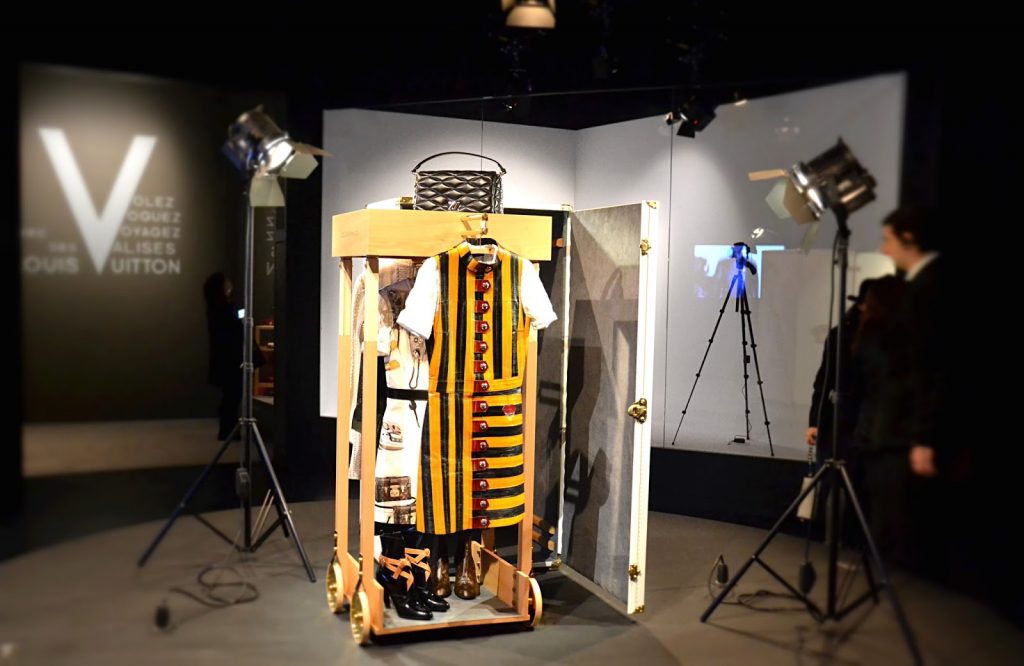
Want to know more about the House of Louis Vuitton and its history, about its famous clients? Want to travel through 19th and the 20th centuries with this luxury brand ? The exhibition is free and open till Febrary 21st, in Paris !
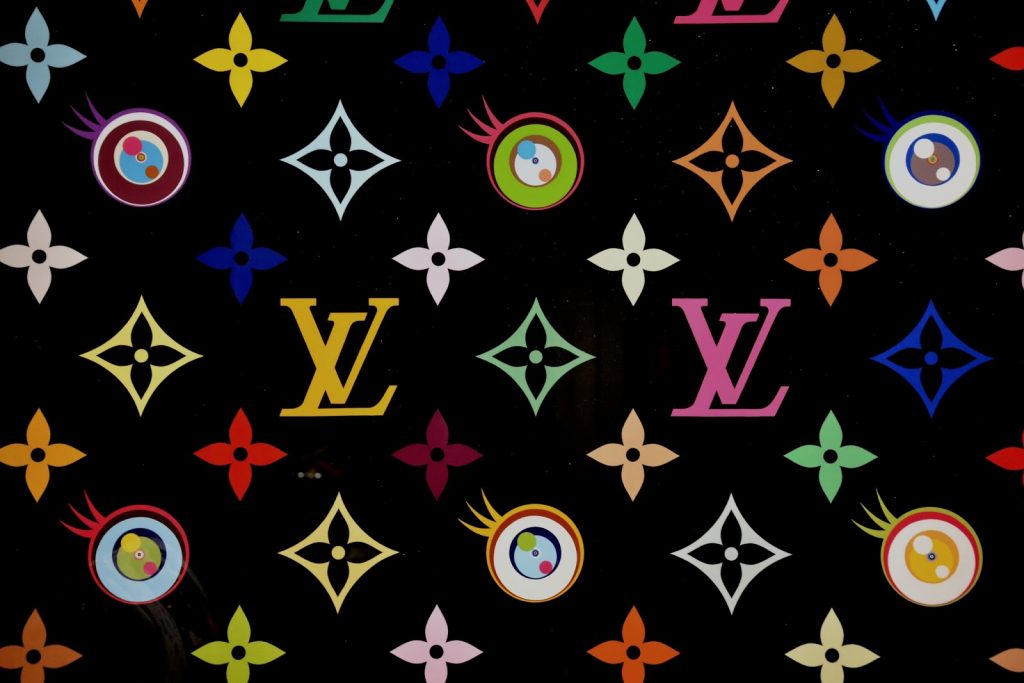
This article is based on the exhibition’s official leaflet.
Text and photos by Katerina Ryzhakova.


